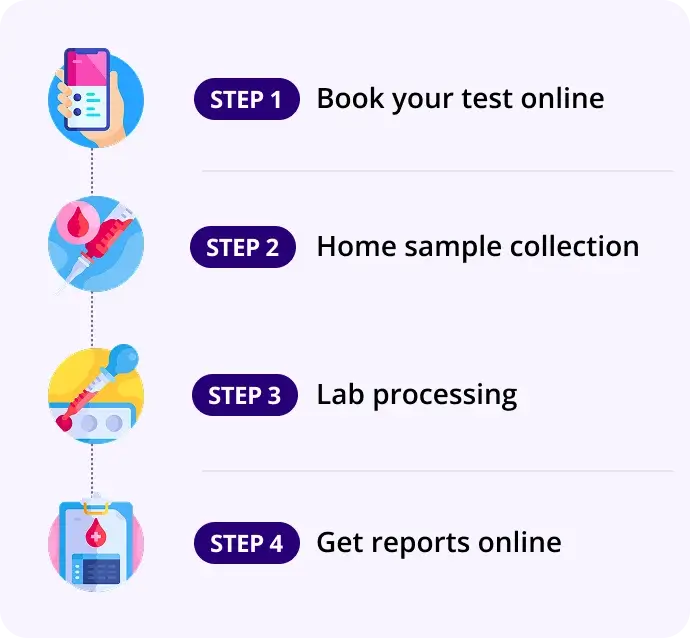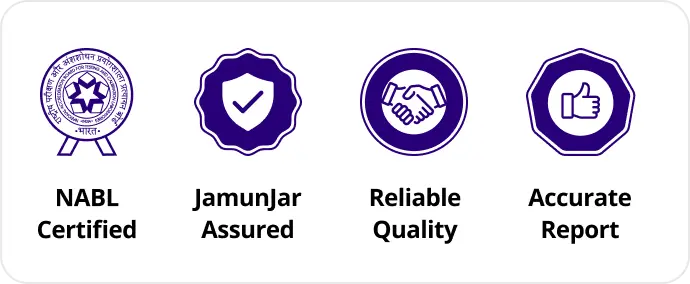Direct Coombs Test
Report in 16Hrs
At Home
No Fasting Required
Details
It is primarily used to diagnose immune-mediated hemolytic anemia, which occurs when the immune system attacks its own red blood cells
₹249₹825
70% OFF
🧪 What is the Direct Coombs Test?
The Direct Coombs Test is a blood test used to detect antibodies or complement proteins that are bound directly to the surface of red blood cells (RBCs). These immune components can cause hemolysis (destruction of RBCs), leading to anemia and other complications.
❓ Why is the Direct Coombs Test Done?
It is primarily used to diagnose immune-mediated hemolytic anemia, which occurs when the immune system attacks its own red blood cells.
Common clinical uses:
- Diagnosing autoimmune hemolytic anemia (AIHA)
- Investigating hemolytic disease of the newborn (HDN) (due to Rh or ABO incompatibility)
- Assessing transfusion reactions
- Evaluating drug-induced hemolysis
- Investigating unexplained hemolytic anemia
📊 Normal Range
Result | Interpretation |
|---|---|
Negative | Normal — no antibodies or complement bound to RBCs |
Positive | Abnormal — antibodies and/or complement detected on RBCs |
🔍 A positive result indicates immune-mediated RBC destruction, but further tests are required to find the exact cause.
🧬 Overview of How the Test Works
- A blood sample is taken from the patient.
- The RBCs are washed and mixed with Coombs reagent (anti-human globulin).
- If antibodies or complement are present on the RBCs, the Coombs reagent will cause agglutination (clumping).
- Agglutination = Positive result.
📈 Interpretation of Results
Result | Clinical Interpretation |
|---|---|
Positive | Suggests immune-mediated hemolysis (e.g., AIHA, HDN, transfusion reaction) |
Negative | No immune cause for hemolysis detected |
A positive test may be due to:
- Autoimmune Hemolytic Anemia (AIHA)
- Alloimmune Hemolysis (e.g., Rh incompatibility in pregnancy)
- Hemolytic Transfusion Reactions
- Drug-induced Hemolysis (e.g., penicillin, methyldopa)
- Chronic lymphocytic leukemia (CLL) or lymphoma
🧠 Associated Organs and Conditions
Organ | Relevance |
|---|---|
Bone Marrow | Produces RBCs; compensates for hemolysis |
Spleen | Site of RBC destruction in immune hemolysis |
Liver | Processes by-products of hemolysis (e.g., bilirubin) |
Placenta (in neonates) | Maternal antibodies can cross and destroy fetal RBCs |
🔄 Related / Follow-Up Tests
- Indirect Coombs Test (ICT) – Detects unbound antibodies in serum
- Hemoglobin – Low in hemolysis
- Reticulocyte Count – Elevated as marrow compensates for RBC loss
- LDH (Lactate Dehydrogenase) – Elevated in cell destruction
- Bilirubin (especially indirect) – Elevated in hemolysis
- Peripheral Blood Smear – Spherocytes, polychromasia
- Haptoglobin – Decreased in intravascular hemolysis
- Cold/Warm Agglutinin Titers – Helps classify type of AIHA
- Blood Grouping and Cross-Matching – Especially in transfusion reactions
📝 Summary
Parameter | Summary |
|---|---|
What | Detects antibodies or complement bound to RBCs causing immune destruction |
Why | To diagnose autoimmune hemolytic anemia, transfusion reactions, HDN |
Normal Range | Negative (no RBC-bound antibodies/complement) |
Positive Result | Indicates immune-mediated RBC destruction |
Key Organs | Bone marrow, spleen, liver, immune system |
Follow-up | Reticulocyte count, bilirubin, LDH, Indirect Coombs, blood smear |
How our test process works!

